Heavy Metals On Earth Originate From Supernova Explosion
Eddie Gonzales Jr. – MessageToEagle.com – A new research by a University of Guelph physicist suggests that most of them were spewed from a largely overlooked kind of star explosion far away in space and time from our planet.
“Some 80 per cent of the heavy elements in the universe likely formed in collapsars, a rare but heavy element-rich form of supernova explosion from the gravitational collapse of old, massive stars typically 30 times as weighty as our sun,” U of G physics professor Daniel Siegel, said in a press release.
That finding overturns the widely held belief that these elements mostly come from collisions between neutron stars or between a neutron star and a black hole, said Siegel.
Using supercomputers, researchers simulated the dynamics of collapsars, or old stars whose gravity causes them to implode and form black holes.
“Under their model, massive, rapidly spinning collapsars eject heavy elements whose amounts and distribution are “astonishingly similar to what we observe in our solar system,” said Siegel.
Until now, scientists thought that these elements were cooked up mostly in stellar smashups involving neutron stars or black holes, as in a collision of two neutron stars observed by Earth-bound detectors that made headlines in 2017.
Ironically, said Siegel, his team began working to understand the physics of that merger before their simulations pointed toward collapsars as a heavy element birth chamber.
“Our research on neutron star mergers has led us to believe that the birth of black holes in a very different type of stellar explosion might produce even more gold than neutron star mergers.”
What collapsars lack in frequency, they make up for in generation of heavy elements, said Siegel. Collapsars also produce intense flashes of gamma rays.
“Eighty per cent of these heavy elements we see should come from collapsars. Collapsars are fairly rare in occurrences of supernovae, even more rare than neutron star mergers – but the amount of material that they eject into space is much higher than that from neutron star mergers.”
The team’s model can be soon validated by observations when infrared instruments such as those on the James Webb Space Telescope, set for launch in 2021, should be able to contribute with further data.
Written by Eddie Gonzales Jr. – MessageToEagle.com Staff
Related Posts
-
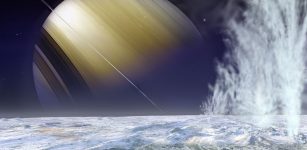 Wednesday Oct. 28, 2015 – NASA’s Cassini Spacecraft Samples An Extraterrestrial Ocean Of Enceladus
No Comments | Oct 28, 2015
Wednesday Oct. 28, 2015 – NASA’s Cassini Spacecraft Samples An Extraterrestrial Ocean Of Enceladus
No Comments | Oct 28, 2015 -
 Black Hole or Newborn Stars? – Galactic Puzzle
No Comments | Dec 3, 2019
Black Hole or Newborn Stars? – Galactic Puzzle
No Comments | Dec 3, 2019 -
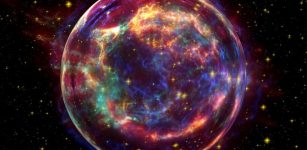 Why Is This Weird, Metallic Star Hurtling Out Of The Milky Way?
No Comments | Aug 4, 2021
Why Is This Weird, Metallic Star Hurtling Out Of The Milky Way?
No Comments | Aug 4, 2021 -
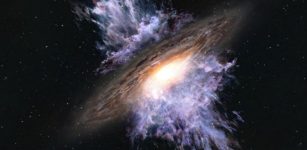 Earliest Gigantic Black Hole Storm Discovered By ALMA
No Comments | Jun 13, 2021
Earliest Gigantic Black Hole Storm Discovered By ALMA
No Comments | Jun 13, 2021 -
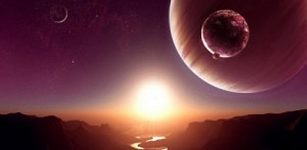 Chances For Life In Multihabitable Planetary Systems: New Study
No Comments | Dec 3, 2015
Chances For Life In Multihabitable Planetary Systems: New Study
No Comments | Dec 3, 2015 -
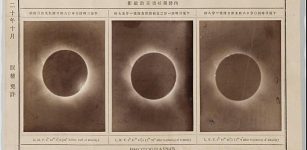 Astronomers Confirm Solar Eclipses Mentioned In Indigenous Folklore And Historical Documents In Japan
No Comments | Nov 9, 2022
Astronomers Confirm Solar Eclipses Mentioned In Indigenous Folklore And Historical Documents In Japan
No Comments | Nov 9, 2022 -
 Dark Matter May Have Existed Long Before Big-Bang Epoch – Study Suggests
No Comments | Aug 13, 2019
Dark Matter May Have Existed Long Before Big-Bang Epoch – Study Suggests
No Comments | Aug 13, 2019 -
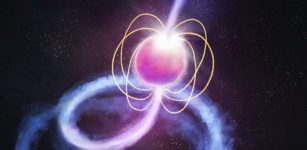 Dense Spinning Dead Star Discovered By Outback Radio Telescope In Australia
No Comments | Apr 26, 2021
Dense Spinning Dead Star Discovered By Outback Radio Telescope In Australia
No Comments | Apr 26, 2021 -
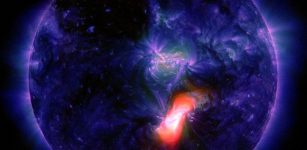 Sun Blasts Flare At Earth: New Year’s Eve Storm?
No Comments | Dec 30, 2015
Sun Blasts Flare At Earth: New Year’s Eve Storm?
No Comments | Dec 30, 2015 -
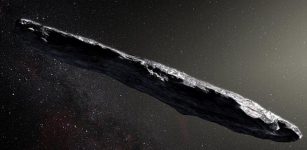 ‘Oumuamua – Interstellar Alien Object That Remains A Mystery
No Comments | Oct 23, 2018
‘Oumuamua – Interstellar Alien Object That Remains A Mystery
No Comments | Oct 23, 2018

